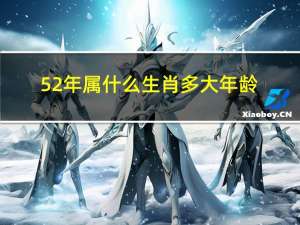什么是传统春节文化英语

【英语短文介绍中国的传统节日春节】
The Spring Festival, also known as Chinese New Year, is the most important and grandest festival in China. It falls on the first day of the lunar calendar, which is usually between January 21 and February 20. The festival has a rich history and is deeply rooted in Chinese culture, showcasing various customs and traditions that have been passed down for generations.
One of the most significant traditions during the Spring Festival is the reunion dinner. Families gather together and share a lavish meal to celebrate the new year. It is believed that the reunion dinner brings good luck and strengthens family bonds. Another popular tradition is the exchange of red envelopes, called \"hongbao,\" which contain money and are given as gifts to children and unmarried individuals. The red color symbolizes good fortune and warding off evil spirits.
Fireworks and firecrackers are a common sight during the Spring Festival. It is believed that the loud noises and bright lights can scare away evil spirits and bring blessings for the coming year. Additionally, lion and dragon dances are performed in streets and public squares to bring good luck and prosperity. People also decorate their homes with red lanterns, couplets, and paper cuttings, adding a festive atmosphere to the surroundings.
Another highlight of the Spring Festival is the temple fair, where people can enjoy various cultural performances, traditional snacks, and handicraft displays. The fair is a lively and bustling event, attracting both locals and tourists. Additionally, traditional Chinese New Year paintings, depicting auspicious symbols and scenes, are hung on walls to bring good luck and prosperity to the household.
【春节的来历和习俗(英文版)】
The origin of the Spring Festival can be traced back to the ancient times of the Yin and Shang dynasties. It is said that there was a ferocious monster called Nian, who would come out during the spring to harm people and livestock. However, the monster was afraid of loud noises and the color red. Therefore, people started using firecrackers and hanging red lanterns to ward off Nian\'s attacks.
Over time, the Spring Festival became more than just a means of protection against mythical creatures. It became a time for families to reunite, pay respects to ancestors, and pray for a prosperous year ahead. The festival is a time of great joy and celebration, with people indulging in delicious food, engaging in traditional activities, and exchanging blessings and good wishes.
【英文简单介绍中国的春节及传统习惯】
The Spring Festival, also known as Chinese New Year, is a two-week long celebration filled with joy and excitement. It marks the beginning of a new lunar year and is celebrated by more than a billion Chinese people around the world.
During the Spring Festival, people embark on a thorough house cleaning known as \"sweeping the dust.\" In Chinese culture, this act signifies removing the old and making way for the new. It is believed to bring good fortune and blessings for the upcoming year. Additionally, the festival is a time to honor ancestors by visiting their gravesites and offering prayers and offerings.
One of the most iconic images of the Spring Festival is the dragon dance. In this vibrant and lively performance, a group of people carry a long dragon puppet and move it in a synchronized manner to the beat of drums and cymbals. It is believed that the dragon brings good luck and chases away evil spirits.
Food plays a central role during the Spring Festival. Families prepare delicious dishes, such as dumplings, fish, and sticky rice cakes. Each dish holds symbolic meaning, representing wishes for prosperity, abundance, and good luck.
【英语翻译欢庆春节是中国的传统习俗】
Celebrating the Spring Festival is a cherished traditional custom in China. It is a time for families to come together, exchange gifts, and rejoice in the joyous atmosphere.
The festival is accompanied by a variety of traditions and customs that have been passed down through generations. The most prominent one is the red envelope, or \"hongbao,\" which symbolizes good luck and wealth. It is customary for elders to give red envelopes containing money to children and younger family members as a gesture of blessings and well-wishes.
Another popular tradition is the lion dance, which involves performers dressing up as lions and intricately mimicking their movements. The dance is accompanied by the beat of drums and the rhythm of cymbals, creating an exciting and energetic atmosphere. It is believed that the lion dance brings good luck and frightens away evil spirits.
Furthermore, the Spring Festival is a time for cultural activities and performances. People showcase traditional arts and crafts, such as paper cutting, calligraphy, and painting. These activities not only preserve the rich cultural heritage of China but also provide a platform for people to appreciate and learn about their history and traditions.
【关于春节的英文春节是中国的传统节日】
The Spring Festival, as the most significant traditional festival in China, holds a special place in the hearts of the Chinese people. It is a time of excitement, joy, and family reunions.
During the Spring Festival, people engage in a wide range of activities and rituals that reflect the rich cultural heritage of China. One of the highlights is the \"Spring Festival Gala,\" a televised program filled with music, dance, comedy sketches, and other entertaining performances. The gala has become a tradition for many families, who gather around the television and enjoy the festive atmosphere together.
Another notable tradition is the lighting of firecrackers and fireworks. The loud noises and bright colors are believed to scare away evil spirits and bring good luck for the new year. It is a spectacle that can be witnessed across cities and rural areas, with people coming together to appreciate the dazzling displays.
Additionally, the Spring Festival is a time for feasting on traditional delicacies. Families prepare a lavish meal known as the reunion dinner, featuring dishes such as fish, dumplings, and sticky rice cakes. These dishes carry symbolic meanings, representing prosperity, abundance, and good fortune.
【中国春节(英文介绍)请分段:1.春节传统习俗2.最重要的庆祝方】
1. The Spring Festival is rich in traditional customs and practices. During this festive time, families engage in thorough cleaning of their houses to sweep away any bad luck accumulated from the past year. Decorations, such as red lanterns and couplets, are put up to bring good fortune and happiness. Lion and dragon dances are performed to chase away evil spirits and ensure a prosperous year ahead.
2. The most important part of the Spring Festival is the reunion dinner, where family members come together to share a lavish meal. The dinner usually consists of various dishes, with each dish holding symbolic meaning. For example, fish represents abundance and prosperity, while dumplings symbolize wealth and good luck.
The festival is also marked by the exchange of red envelopes, especially for children and unmarried individuals. These lucky envelopes contain money and are given as a gesture of blessings and well-wishes for the new year. Fireworks and firecrackers light up the night sky, creating a festive and joyous atmosphere for all to enjoy.
【英语作文写一篇短文,介绍中国的传统节日春节】
The Spring Festival, also known as Chinese New Year, is a traditional festival deeply rooted in Chinese culture. It is a time of great significance and joy, bringing together families and communities in spirited celebration.
During the Spring Festival, streets and homes are adorned with vibrant decorations. Red is the predominant color, symbolizing luck, happiness, and prosperity. Red lanterns, couplets, and paper cuttings can be seen everywhere, creating a festive atmosphere that envelopes the entire country.
A crucial part of the festival is the reunion dinner, where family members gather to enjoy a sumptuous feast. Traditional dishes, each carrying auspicious meanings, are prepared. The highlight of the dinner is often a whole fish, symbolizing surplus and abundance for the coming year.
A prominent tradition during the Spring Festival is the exchange of red envelopes. These envelopes, filled with money, are given to children and unmarried individuals as a gesture of blessings and good fortune. The act of giving and receiving red envelopes reinforces the sense of unity and love within families.
The festival not only emphasizes family reunion but also showcases various cultural activities. Temple fairs are held, featuring traditional performances, such as dragon and lion dances, folk music, and acrobatics. Additionally, people participate in ancestor worship, visiting gravesites and paying respects to their deceased loved ones.
In conclusion, the Spring Festival is a time of joy, unity, and cultural richness. Its traditions and customs reflect the values and beliefs deeply ingrained in Chinese society, making it a unique and cherished festival.
【用英语描述一下我们的传统节日---春节】
The Spring Festival is a highly anticipated traditional festival in our culture. It is a time for families to come together, celebrate, and create lasting memories.
During this festive season, streets and homes are adorned with vibrant decorations, such as red lanterns and couplets. The color red symbolizes good luck and happiness, infusing the atmosphere with a sense of joy and positivity.
The reunion dinner is the centerpiece of the Spring Festival. Family members gather around a table filled with a variety of delicious dishes, each one carrying symbolic meaning. Fish is a must-have dish, as it represents abundance and prosperity. Additionally, dumplings are enjoyed for their resemblance to ancient Chinese currency and are believed to bring wealth and good fortune.
The exchange of red envelopes is a beloved tradition that brings smiles to the faces of children and unmarried individuals. These red envelopes, filled with money, symbolize blessings for a prosperous year ahead. It is a heartwarming gesture that strengthens family bonds and fosters a sense of generosity and care.
The festive spirit of the Spring Festival extends beyond the home. Temples and public squares come alive with cultural performances, including traditional dances, songs, and acrobatics. The vivid displays and lively atmosphere showcase the rich heritage and artistic talents of our culture.
The Spring Festival holds a special place in our hearts, as it encompasses the values of love, unity, and gratitude. It is an occasion where traditions are cherished and passed down from generation to generation. It is a time for reflection, gratitude, and anticipation for a bright and prosperous future.
【我需要一篇关于春节习俗的英语作文还有翻译】
Spring Festival customs春节习俗
The Spring Festival is an ancient festival in our country, and it also holds great importance as the most significant festival of the year. Over thousands of years, certain customs and traditions have been formed to celebrate and honor this special occasion.
During the Spring Festival, families come together to enjoy a hearty reunion dinner. This meal not only brings family members closer but is also an opportunity to appreciate the blessings and achievements of the past year. It is a time to express gratitude and unite in the spirit of love and harmony.
One of the most exciting traditions is the setting off of fireworks and firecrackers. The loud sounds and vibrant colors are believed to ward off evil spirits and bring good luck for the coming year. The spectacle of fireworks lighting up the night sky is met with awe and wonder by people of all ages.
Another prominent tradition is the dragon and lion dances. These dynamic performances are a feast for the eyes and ears, as the performers skillfully maneuver the large puppet-like creatures with coordinated movements. It is believed that the dances bring good luck, fortune, and prosperity to the community.
The custom of giving and receiving red envelopes during the Spring Festival is eagerly anticipated by children and unmarried individuals. Red envelopes symbolize good luck and wealth, and the act of giving them is a gesture of love and blessings. It is a heartwarming tradition that reinforces the importance of family and generosity.
The Spring Festival is a time for people to reflect on the past, express gratitude, and embrace the future. It is a celebration of unity, love, and cultural heritage. The customs and traditions associated with this festival bring joy, prosperity, and a renewed sense of hope year after year.
【要求写一篇介绍中国传统节日的英语作文.就写春节吧!】
The Spring Festival, also known as Chinese New Year, is a widely celebrated traditional festival in China. It is a time of joy, festivities, and deep cultural significance.
Preparations for the Spring Festival begin well in advance. People clean their houses thoroughly, symbolizing the removal of any negative energy and making way for good fortune. Decorations, such as red lanterns, couplets, and paper cuttings, are put up to create an auspicious atmosphere.
The reunion dinner is one of the most important aspects of the Spring Festival. Family members gather around the table, sharing a bountiful meal together. This dinner not only celebrates the unity of the family but also reflects hope for a prosperous and harmonious year ahead.
Fireworks and firecrackers are an integral part of the Spring Festival. The loud noises and bright lights are believed to chase away evil spirits and bring good luck. It is a thrilling experience that adds excitement and joy to the festive atmosphere.
The exchange of red envelopes, filled with money, is a cherished tradition during the Spring Festival. It is a gesture of blessings and well-wishes for the new year. The act of giving and receiving red envelopes brings happiness and reinforces the importance of sharing and showing kindness to one another.
The Spring Festival is also a time for cultural activities and performances. Dragon and lion dances, traditional music, and dances can be witnessed across the country. These performances not only showcase the rich cultural heritage of China but also provide entertainment and joy to people of all ages.
Overall, the Spring Festival is a time of love, unity, and appreciation for the values that bind the Chinese













